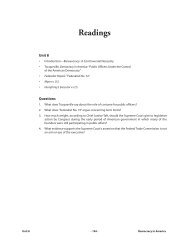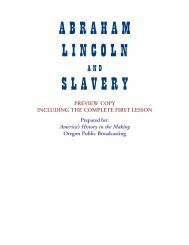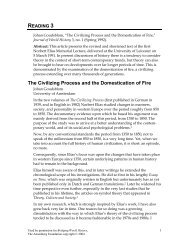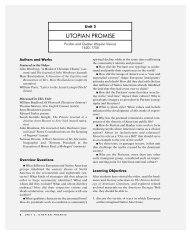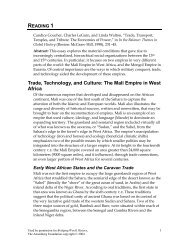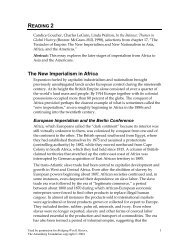Create successful ePaper yourself
Turn your PDF publications into a flip-book with our unique Google optimized e-Paper software.
“Umritza Cashmere” as possessing “all the best qualities of the Indian<br />
make, combined with the durability and closeness of English<br />
manufactures.” The fabric even had “long hairs scattered over its surface<br />
[which] give it a very foreign appearance and add to its attractions”<br />
(quoted in Adburgham 1975, 31-32). Liberty’s thus invoked Indian<br />
exoticism for their imitative fabrics by naming them for the Punjabi city of<br />
Amritsar and through using the common spelling of Kashmir.<br />
27. An estimated eighty percent of the nineteenth-century shawls produced<br />
in the Native State of Kashmir and exported to Europe went to France<br />
(Bates [1873], 59). Britain obtained their supply of Kashmiri-type shawls<br />
and shawling from Kashmiri migrants in the geographical areas they<br />
ruled directly. The British Raj had conquered eastern Punjab and some of<br />
the Punjabi Hill States at the beginning of the nineteenth century; it took<br />
over the rest of Punjab in 1849. Kashmiri migrants established shawl<br />
workshops in several Punjabi cities, most notably Amritsar, during the<br />
reign of Maharaja Ranjit Singh.<br />
28. After the British conquered all of Punjab in 1849, their substitution of<br />
“English goods” for Kashmiri-type shawls and shawl cloth in formal<br />
political practice became a continuing source of local complaint. In 1883,<br />
the Honorary Magistrate and “principal shawl merchant” in Ludhiana,<br />
Ahsan Shah, reported that the “superior pashmina” or shawl cloth was<br />
sent to France and Persia, while the “inferior” was still sold to the Native<br />
States and used for “giving presents, Khillats, etc.” The Imperial<br />
Government had purchased robes of honor for “Chiefs and gentlemen<br />
heretofore [which had] consisted chiefly of superior Pashmina, but since<br />
the Imperial Assemblage [Durbar] of 1877 in Delhi the custom of giving<br />
such Khillats has been dropped.” One British official noted at the same<br />
time that shawl traders “complain bitterly of the falling off of patronage<br />
of the government” especially since the Governor General claimed that he<br />
“wishes to patronize manufactures of India” (Report… 1882–83, 58). The<br />
Governor General’s “wishes” have to be put into the context of the larger<br />
restructuring of British trade sketched above. British imperialists moved<br />
into Central Asia in the 1870s, disrupting Kashmiri influence over this<br />
trade as well (Ahad 1987, 108; Bamzai 1980). Quotations from Ahsan<br />
Shah, Appendix A, “Pashmina Trade and Manufacturing” for the Report<br />
on the Internal Trade and Manufactures of the Panjab for 1882–83, 1.<br />
29. Kani shawls with hand-woven designs required the skills of an expert<br />
refugar (“repairer” or “darner”), who “could strip and recreate the<br />
defective sections of shawls and join pieces together invisibly” (Dhamija<br />
1989, 77). To lessen the time it took to weave a kani shawl on one loom,<br />
“patchwork” or “pieced” shawls became common in the nineteenth<br />
century. Many small pieces were woven on separate looms and joined<br />
Used by permission for Bridging World History, 30<br />
The Annenberg Foundation copyright © 2004



